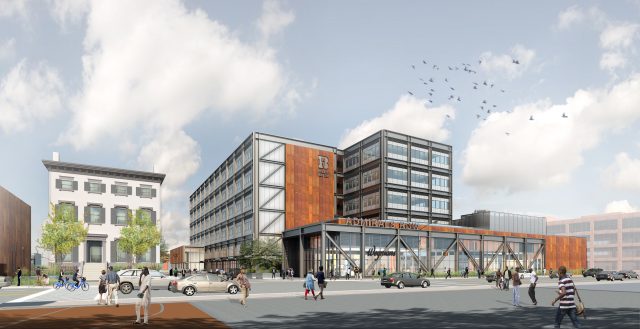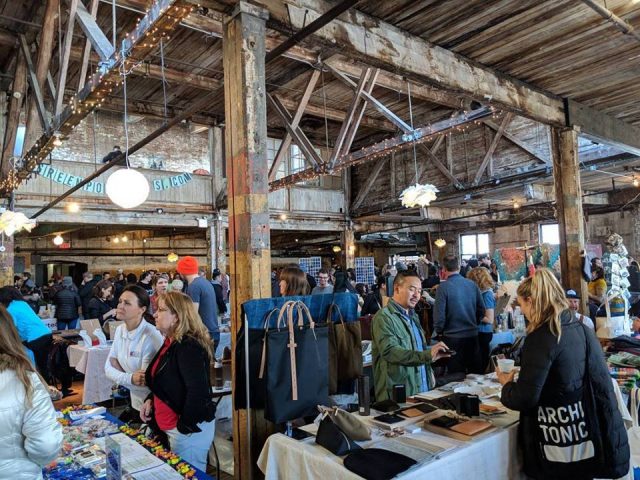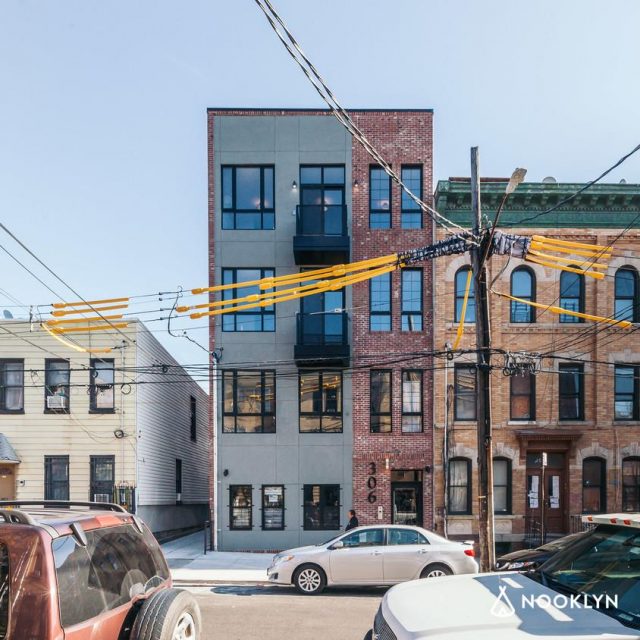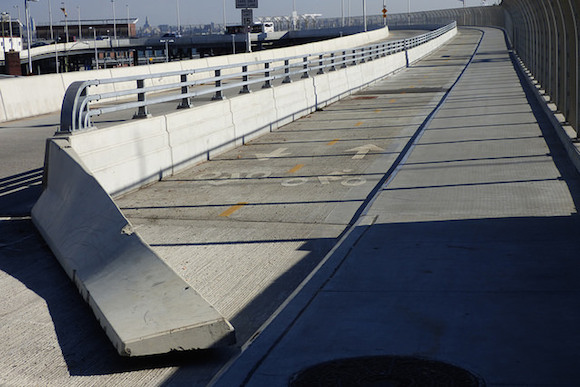
Yesterday, DNA Info reported that city officials were finally getting started on building the long-awaited bike lane for the Pulaski Bridge, which connects Brooklyn to Queens. Construction is expected to start mid-April, but its projected completion date isn’t until the end of the year. Of course, that’s assuming they finish on time. And if next winter is anything like this past one, the weather will probably postpone actual ridership along the path until 2016. That doesn’t exactly jive with what Assemblyman Joe Lentol of the DOT once said about sharing commuters’ “sense of urgency” for the lane. So what gives? Why does it take so long to build one goddamn bike lane? We found a city contractor who tells us there’s more to it than just painting some new stripes down the road.
At first glance, building a lane seems like one long paint-job. After all, none of the roads actually shrink or grow; space is simply re-allotted along the existing roadway. But when it comes down to getting the job done, a number of factors will slow the process down. We talked to one of New York’s oldest subcontractors, Roman Stone Co.—whose clients include the MTA and Con-Ed, among others—about the basic specs of lane construction and road closure.
Since Roman Stone’s specialty is concrete, we asked company president Tom Mantolbine about what it might take to produce and install the traffic barrier that will separate cyclists from vehicles along Pulaski’s bike lane.
_____________________________
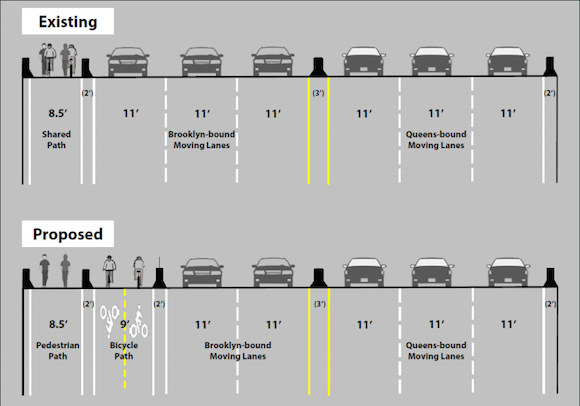
“When we get an order, we get right to work,” Mantolbine tells us. “Contractors are the ones who give us the time frame. If they wanted to install in September, for example, they should give us the order in January. Unfortunately, that’s not how things happen. Sometimes we get the order and they say ‘we need it tomorrow.’ ”
As with any city project, Mantolbine explains, half the battle is red tape and safety specs.
“Anything that’s made for New York City or New York State has to go through an inspection process,” Mantolbine says. “We have inspectors sitting at the plant all day, because everything has to be made in a certain way. Like using only domestic steel, or a certain design. The inspector’s approval then goes through contractor, and then the city—all that has to happen before we even get paid.”
When Streets Blog NYC first reported the delay on the Pulaski project last year, they listed a number of hoops that had to be jumped through before construction could begin: pre-construction meetings with stakeholders, engineering studies on the bridge, obtaining comptroller and city approval and then putting through all the paperwork. It may sound like pointless administrative jargon, but it’s no surprise that things got pushed back because of it. Contracting the labor to install it, the report explained, was just a matter of weather conditions. A freezing, windy bridge mid-winter can be unsafe for crew, and isn’t conducive to getting the job done quickly.
There’s still a long haul even after construction begins, because everyone with a car wants to keep using the road.
“It’s a huge commuter project on a major traffic intersection, and it takes a lot to close that road,” Mantolbine says. “In an ideal world, a contractor could just close the road for a few weeks and work all day. But there are road restrictions. Sometimes you only have from 10pm-5am every night. Nowadays in construction, you also have to set up maintenance, protection to traffic. That takes an hour off each end, so suddenly you’re down to a five-hour work window.”
So it turns out a bike lane isn’t just one long white stripe and some stick-people on asphalt. Hey, while you’re waiting for the lane, take the G train! We’ll conquer the Pulaski yet.
Leave a Reply

